Amazing parking elevators for cars of the 30s (7 photos + 1 video)
The first semi-automatic system was built in Paris on Garage Rue de Ponthieu in 1905. An elevator installed inside a concrete building lifted the car to the upper level, where the attendants parked the car. 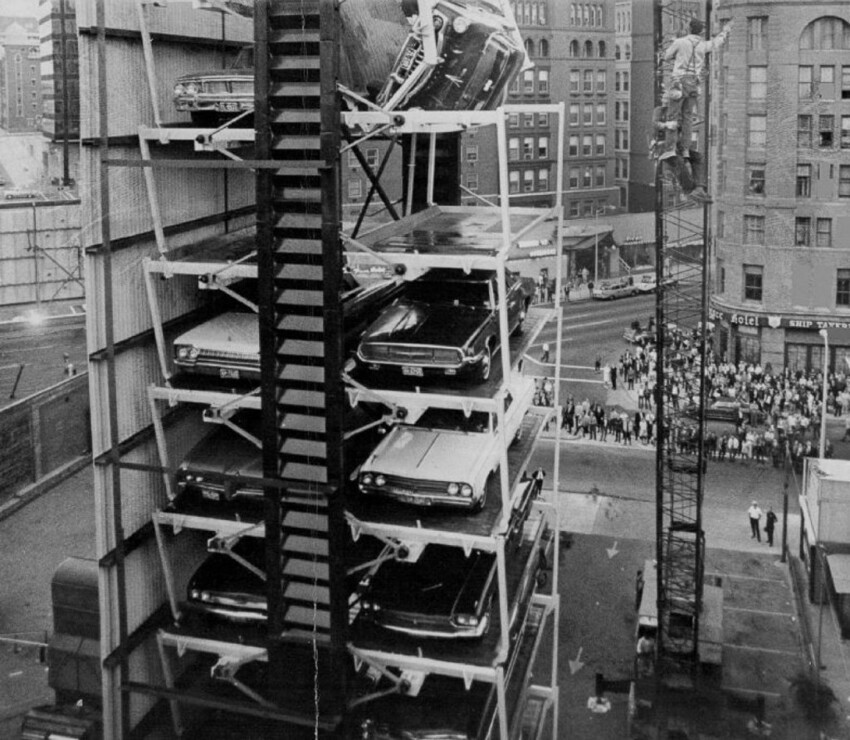
“Currently, a significant number of potential buyers and future car owners doubt buying a car because of one big and yet unsolvable problem: car parking, when they are at work or come to the store .... "(" Everyday Science and Mechanics, January 1932) 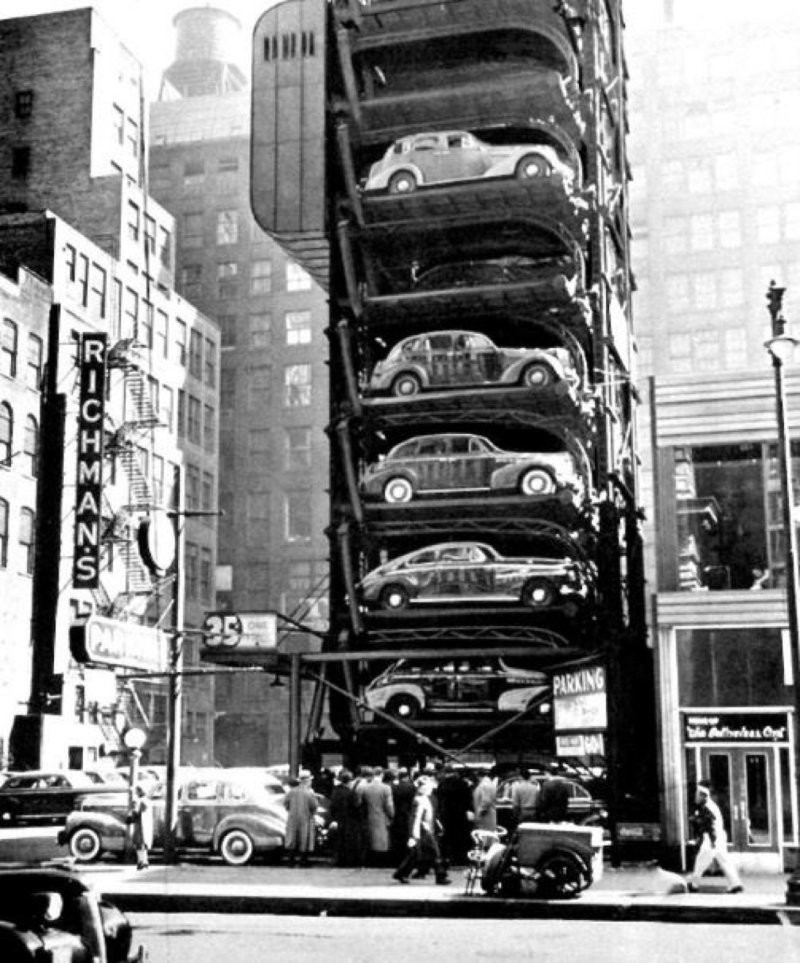
The automobile era brought life to big cities many problems and ways to solve them, innovative and not so much. Height the number of cars made me think about parking spaces, and then came up with an idea that seemed crazy, but at the same time enough modern, compact and realizable - a parking car-elevator. Such the elevator could have appeared only in that short economic moment when it appeared. 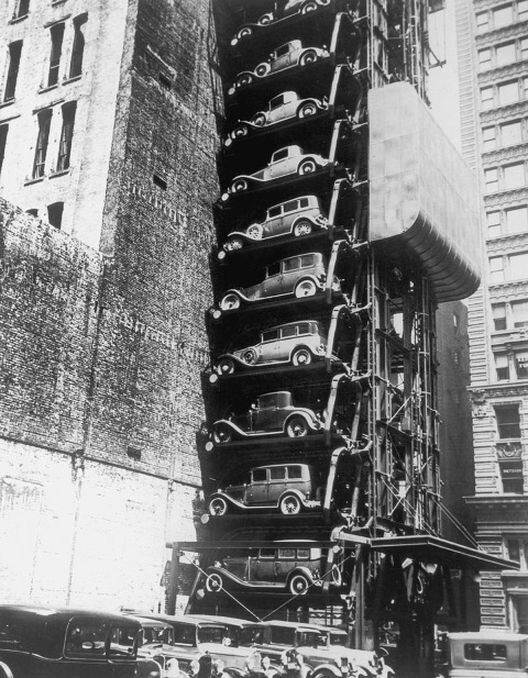
In the late 1920s, when real estate speculation in centers of large American cities - Los Angeles, New York and Chicago - peaked, no one wanted to build garages, because more money can be was to make money on office skyscrapers. But just a few years later, in the height of the Great Depression, many downtown homeowners "demolished" buildings and built parking lots to avoid paying taxes on depreciating property. 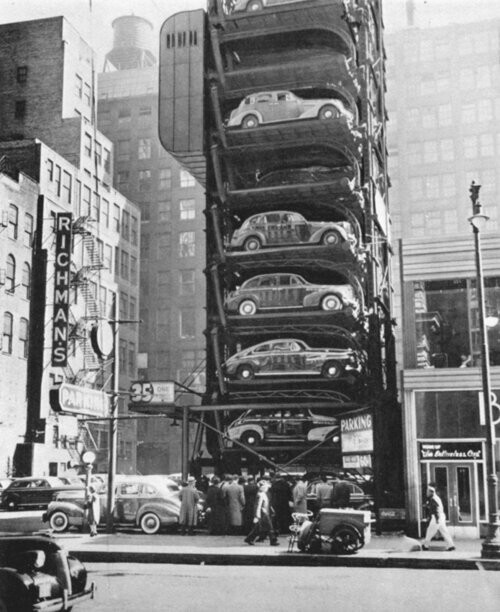
However, the first such parking systems appeared in Los Angeles, New York and Chicago precisely in the 1920s. System, which is used frequently even today (in Japan, for example), paternoster, was invented by Westinghouse in 1923 and first used in Chicago on Monroe Street, between State and Dearborn. 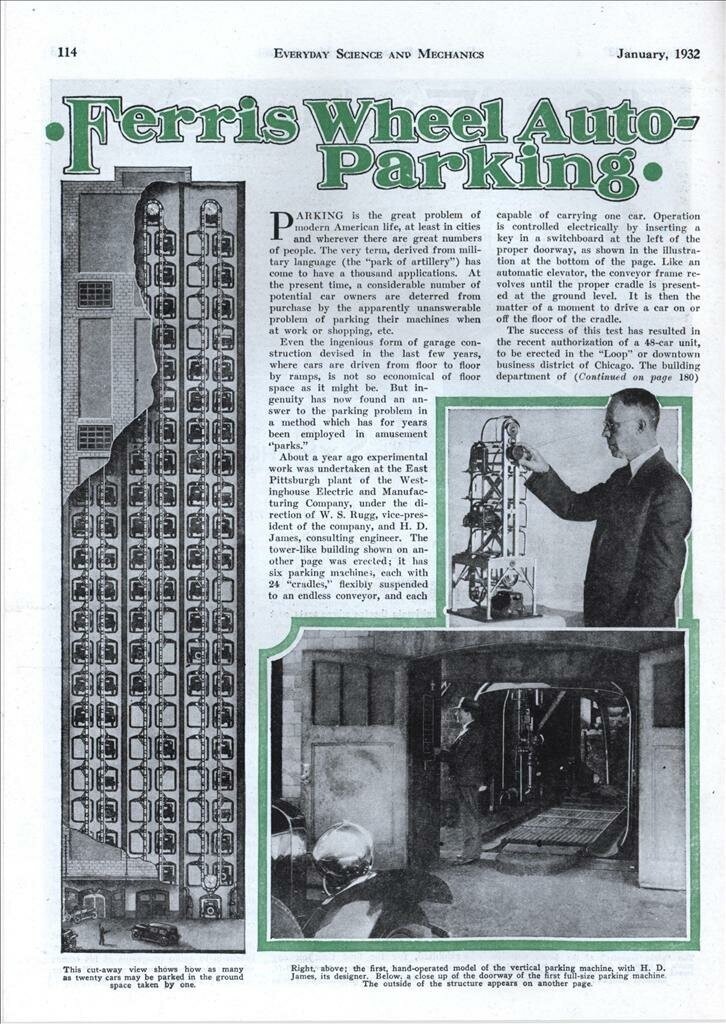
Below you can watch a video of how it worked similar mechanisms. In short - this is a kind of "ferris wheel" for cars. The parking space was a cage where she drove into machine, and then, rotating all fixed cells on a special ring lift, it was lifted up, making room for a new free parking cage. And the idea worked because it was profitable, despite the need to build such a structure, in terms of parking place. The parking lots were powered by electric motors and hydraulic pumps. 
In 1933, another company "Nash Motor Company" designs the first glazed parking system to be displayed on World Exhibition "Age of Progress". 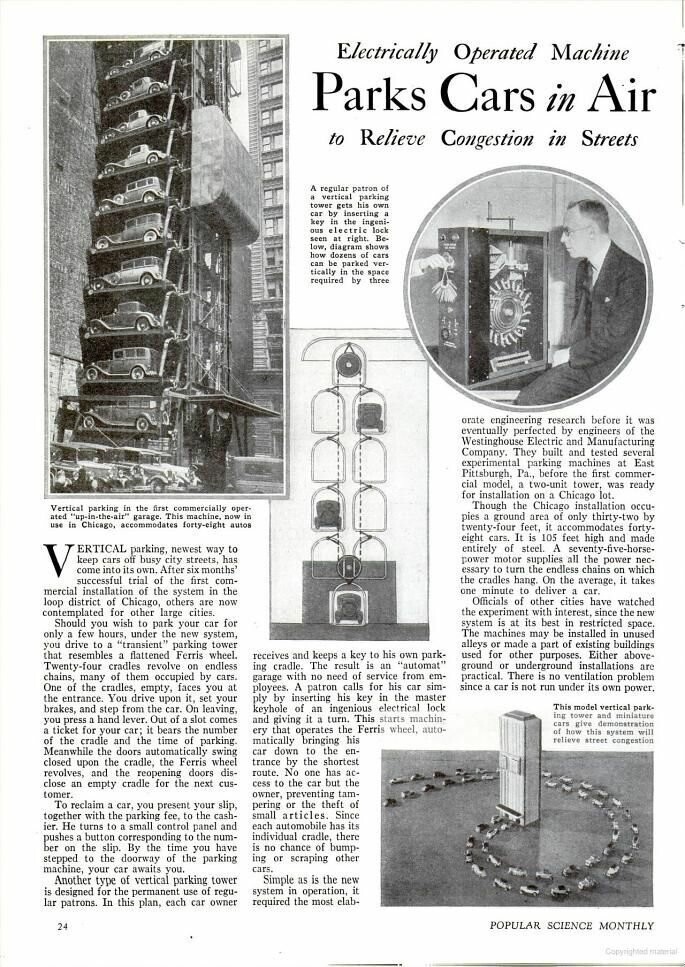
“The success of this idea will undoubtedly greatly increase the value of cars to citizens. Also, such parking lots stimulate buying a car even in the city center. They will speed up traffic by clearing streets from numerous parked cars, which are often reduce traffic lanes to half their effective width. .... " ("Everyday Science and Mechanics", January 1932)





















